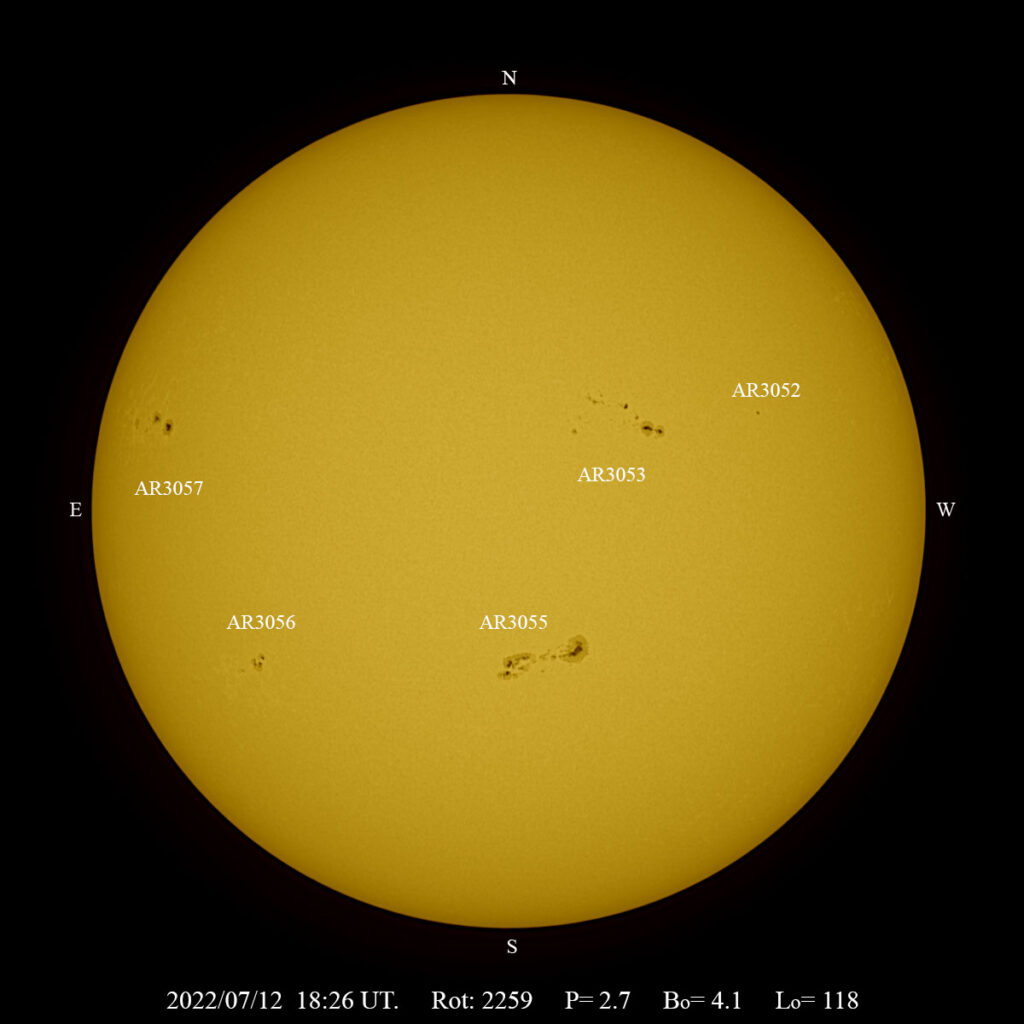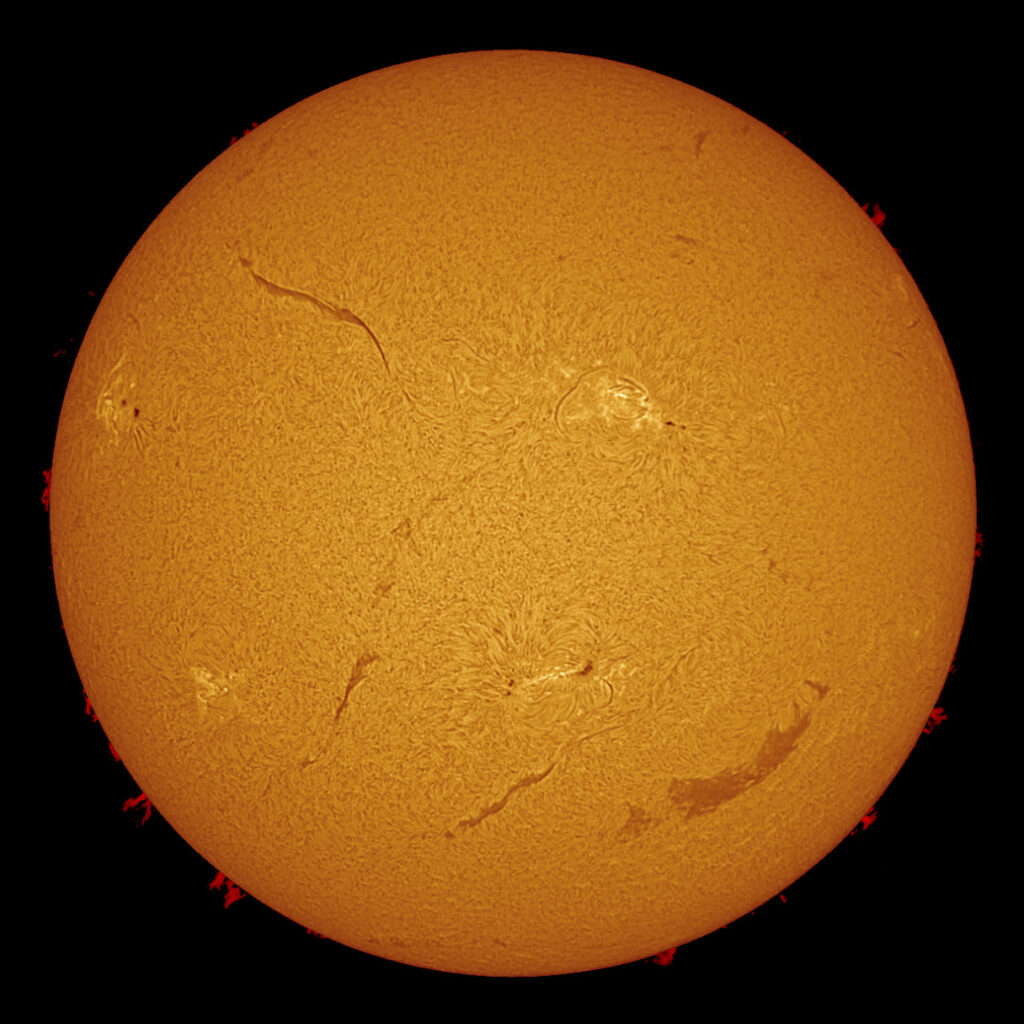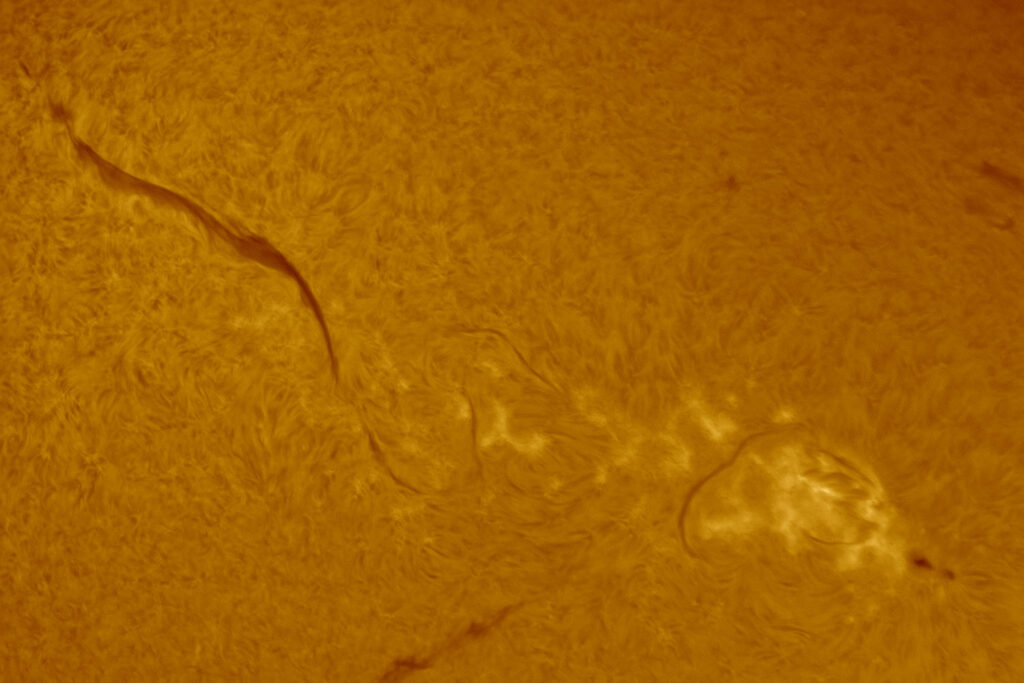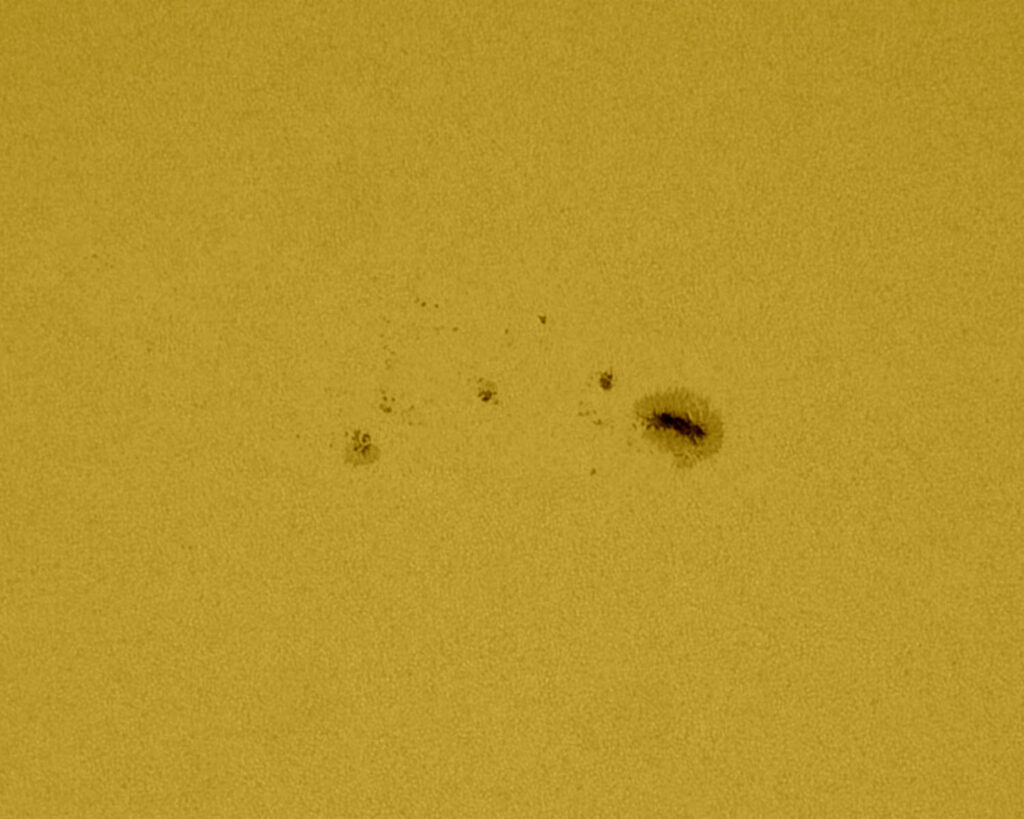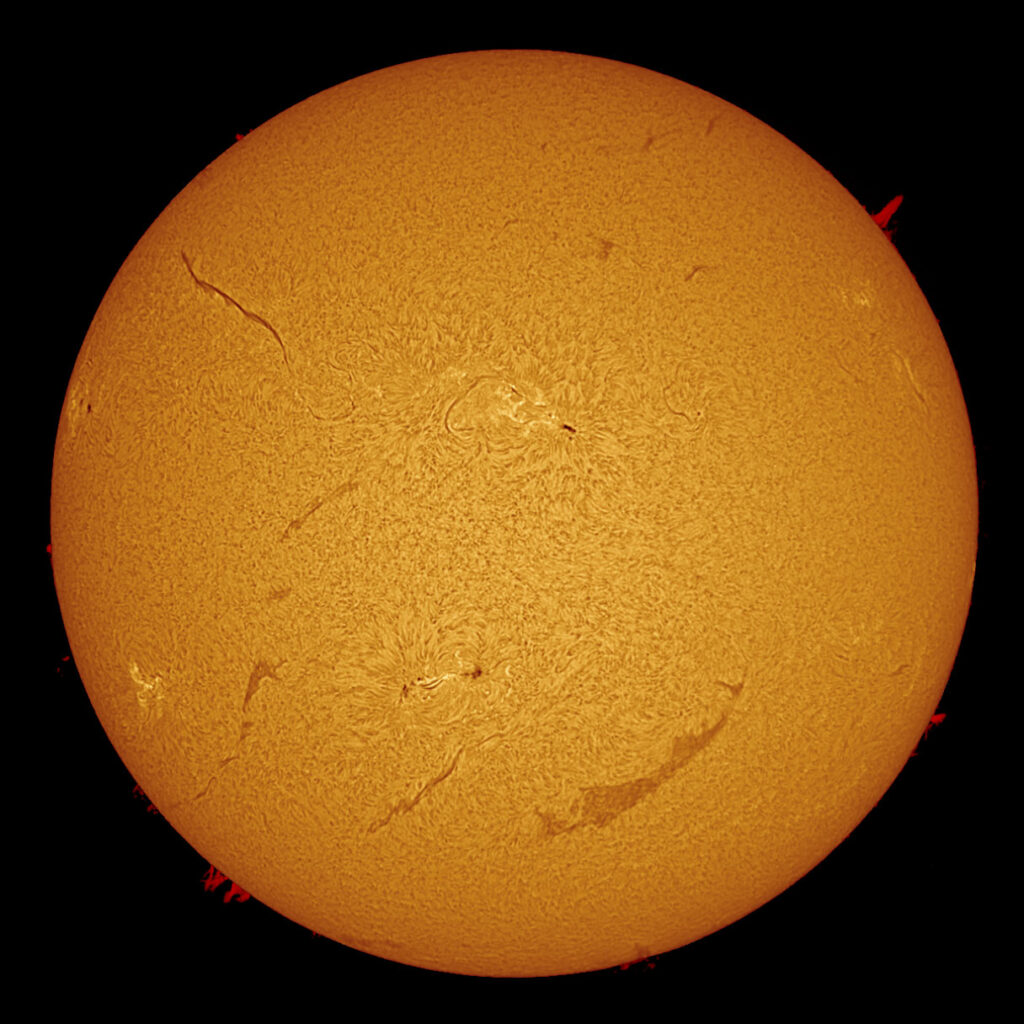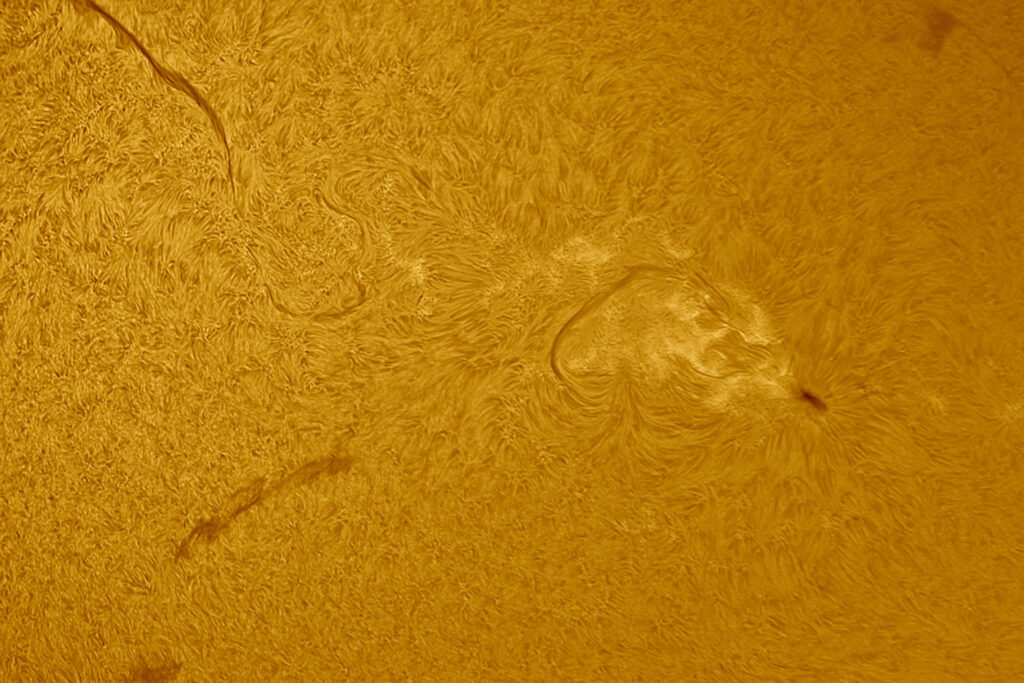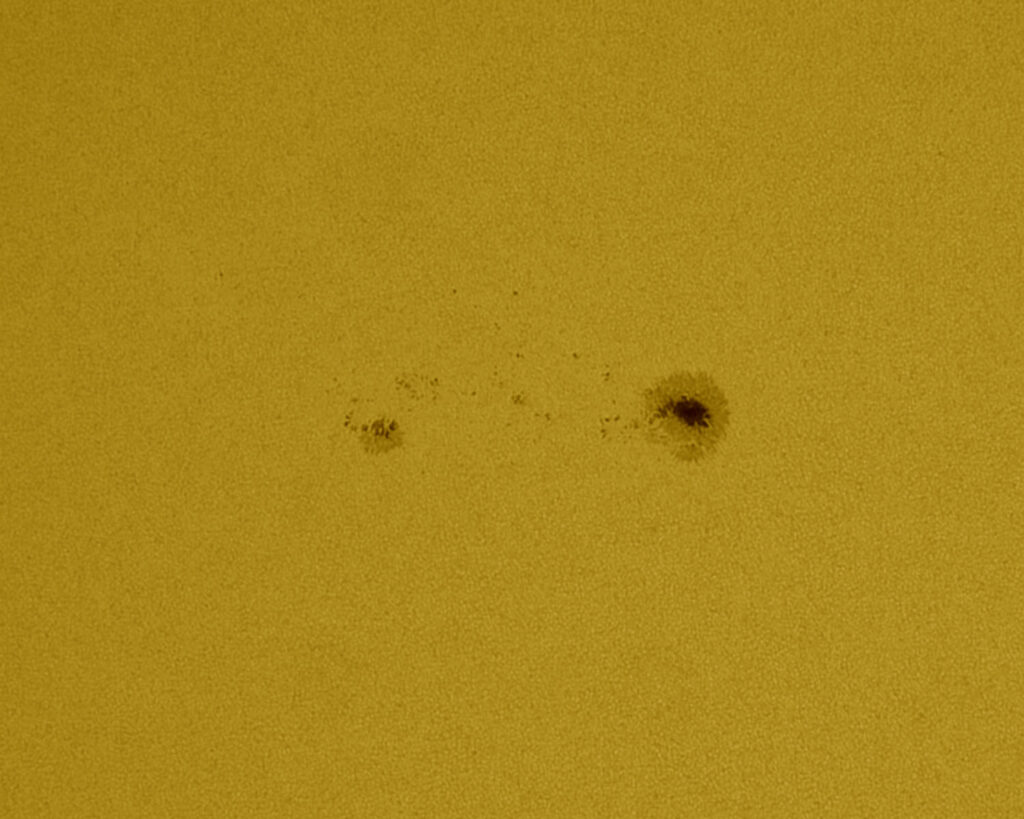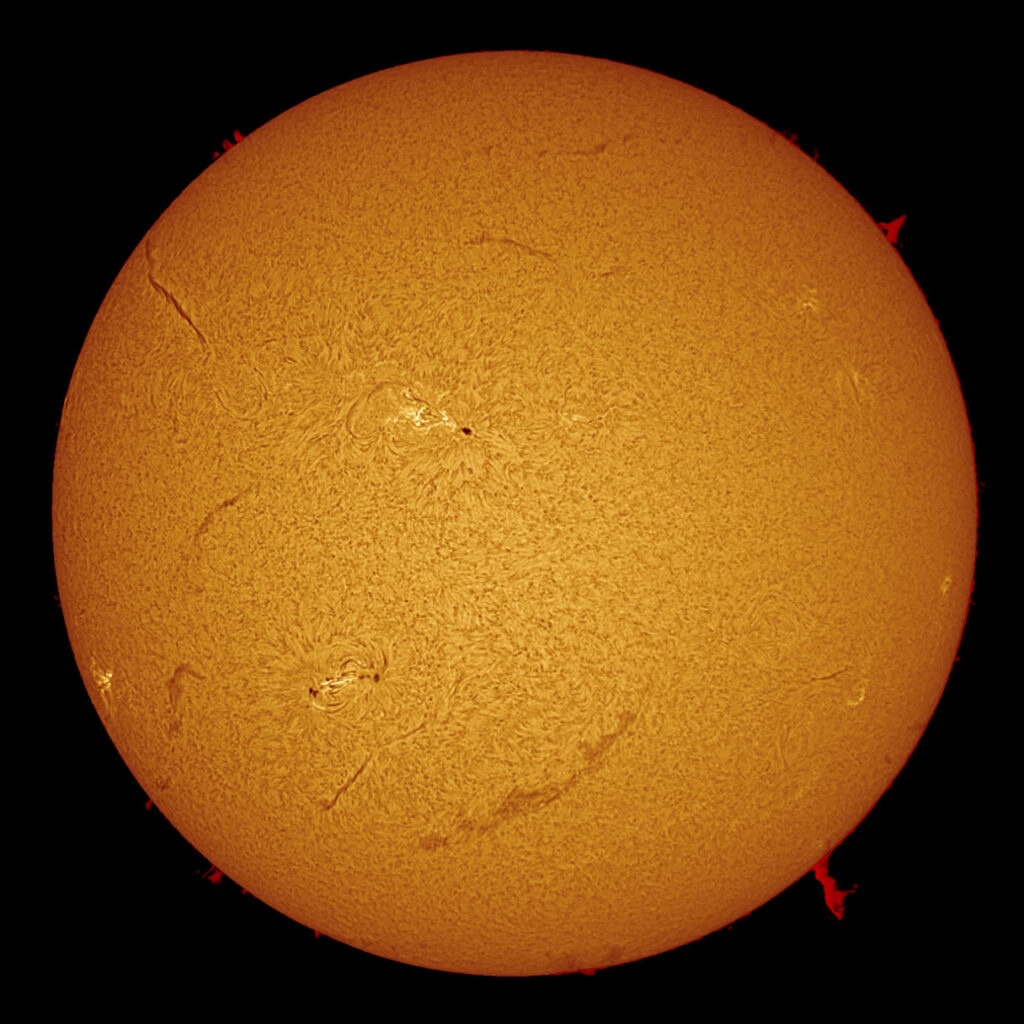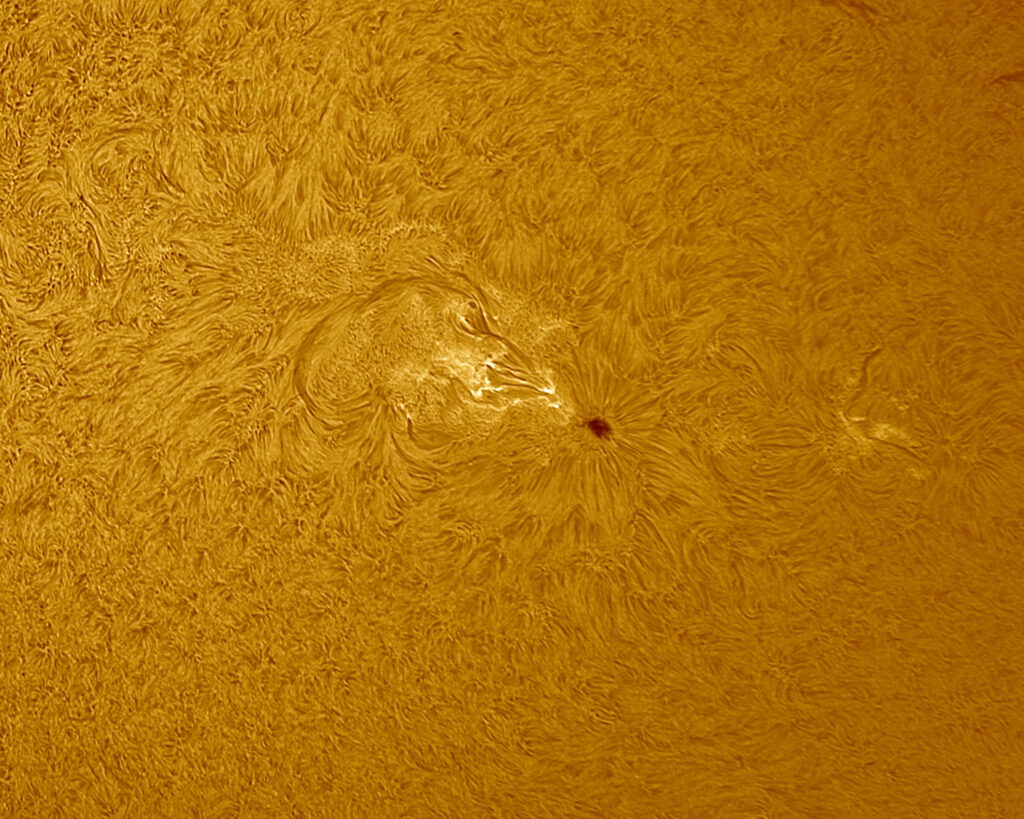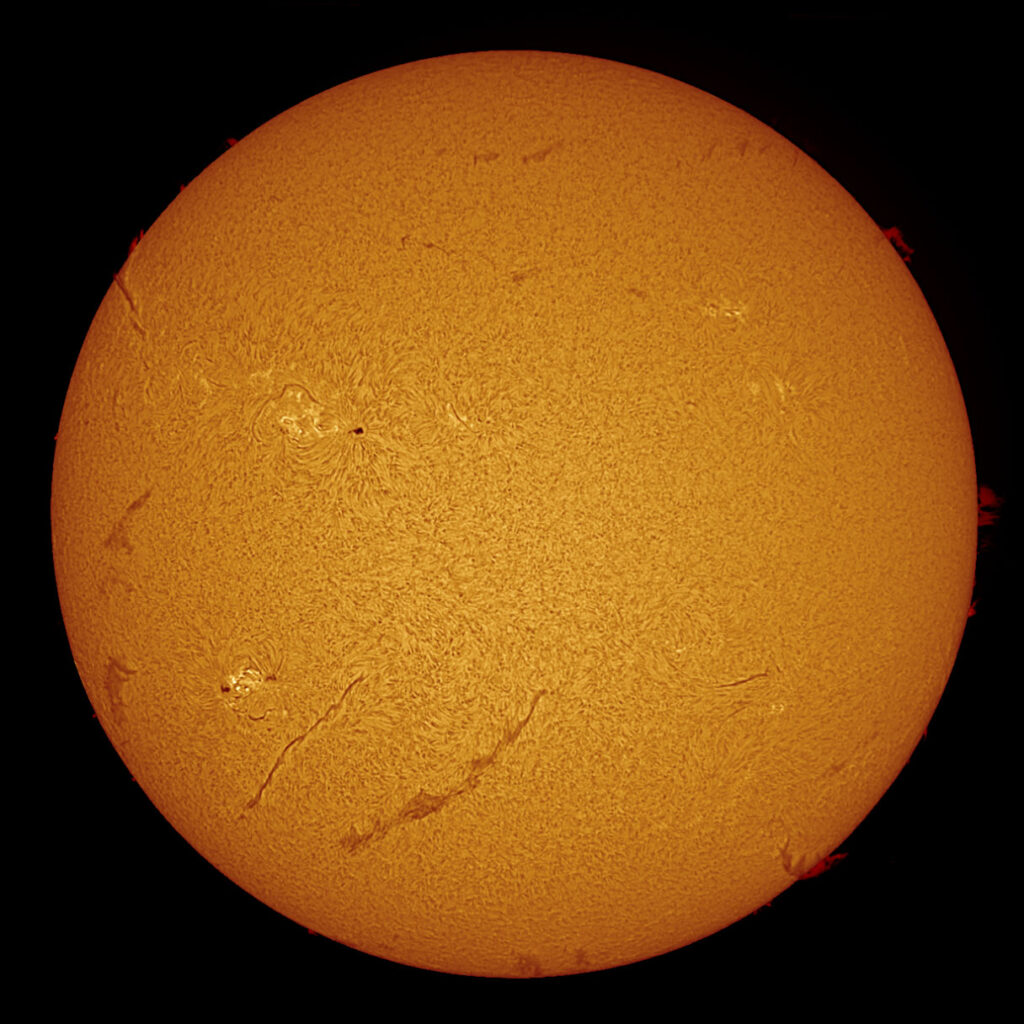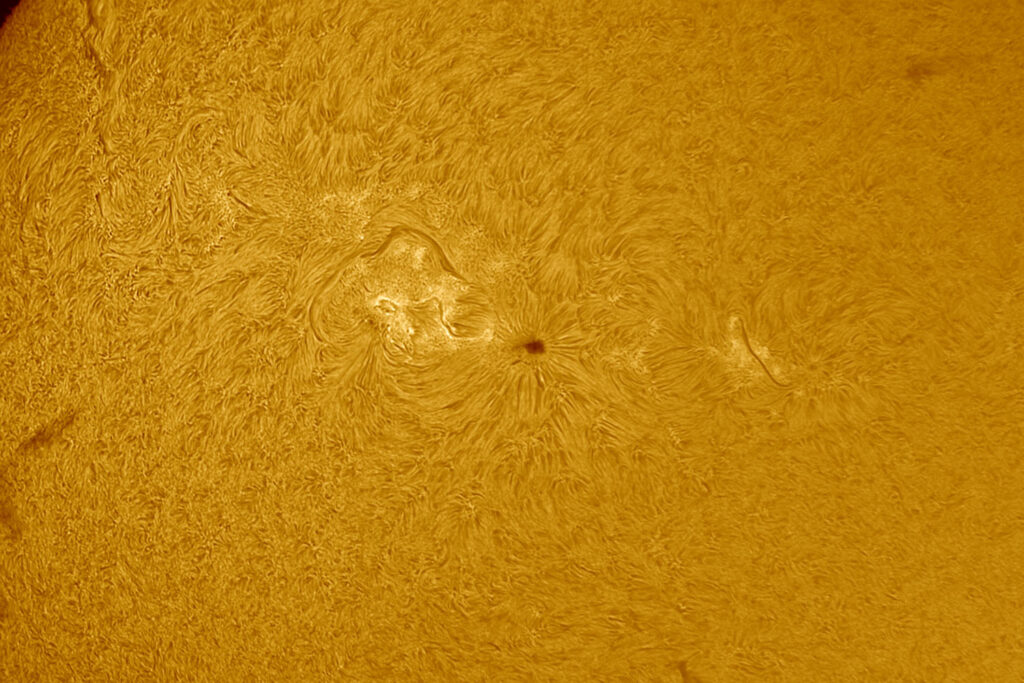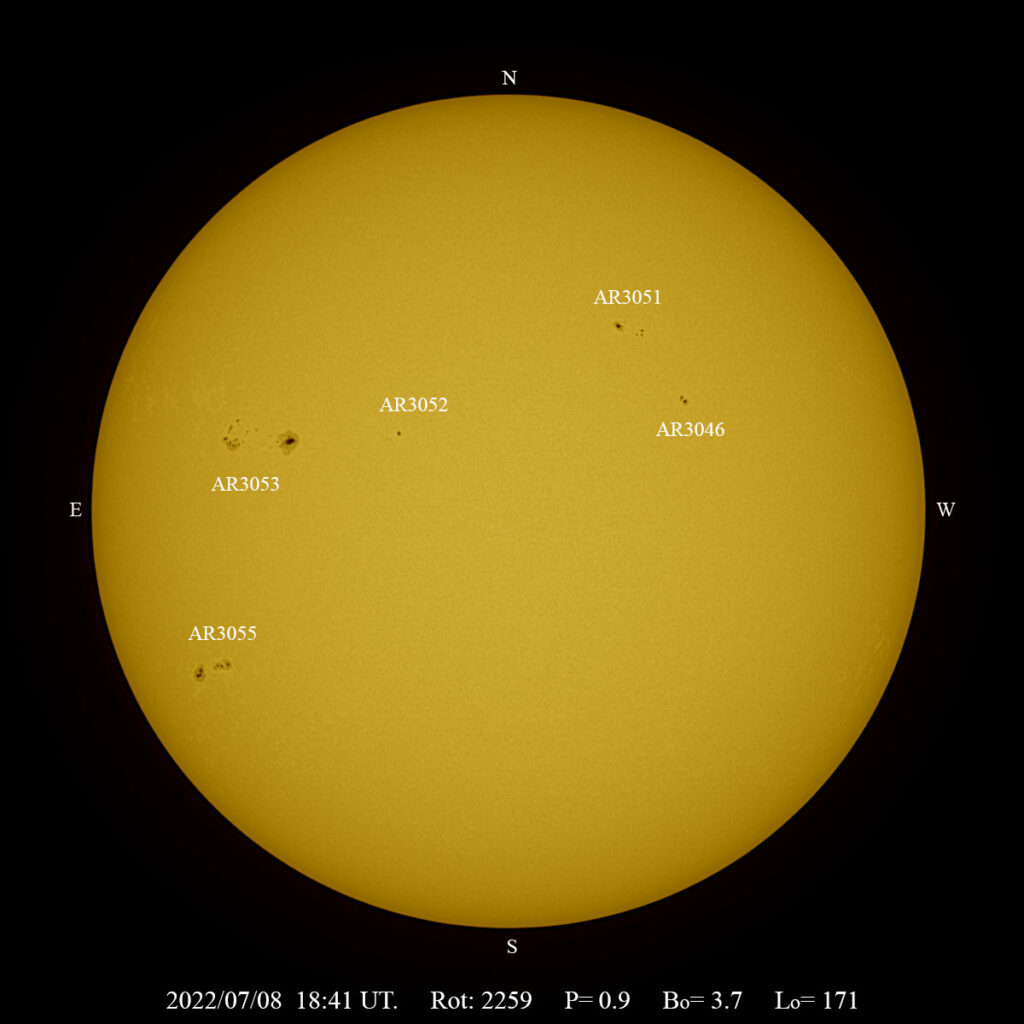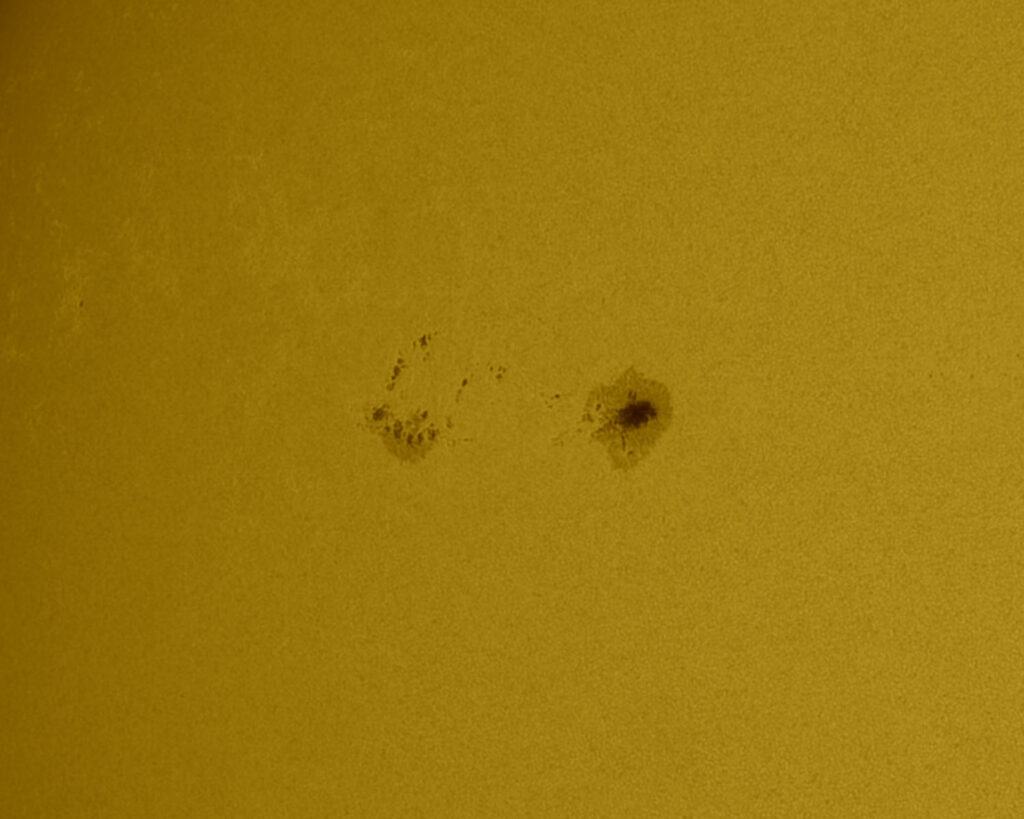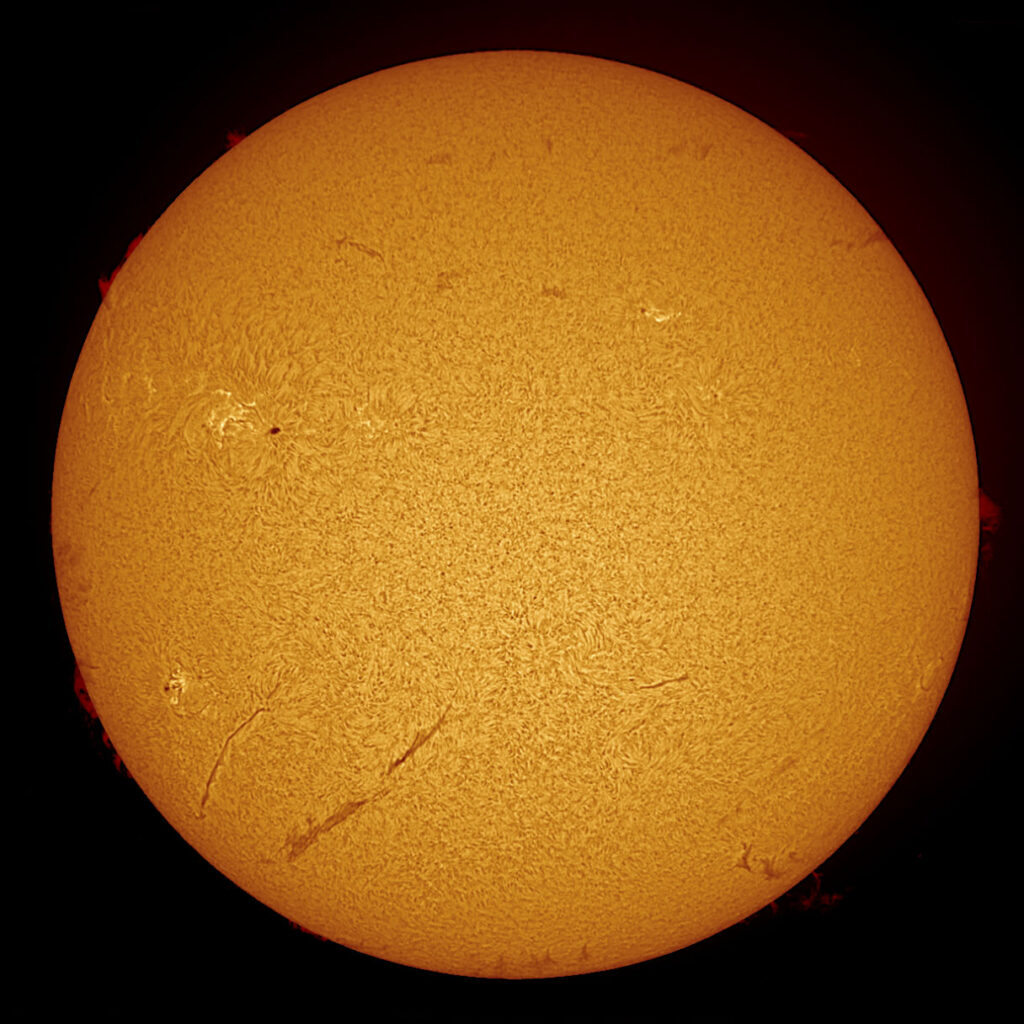Sun - Active Region 3053
July, 2022
- Description
- Equipment
- Background
Active Region AR3053 is a somewhat complex region in White Light & quite interesting when viewed in H-Alpha. When first imaged on 7/8, AR3053 is seen to be already quite progressed around the Eastern limb. The White Light images do not really develop much, but in H-alpha AR3053 has a nice developing Filament, which can be seen in all the images.
A filament appears dark when viewed on the solar surface, but when it is seen extending from the edge of the Sun’s limb it is known as a Prominence. The H-alpha image on June 22 captures a filament which also extends as a Prominence. Prominences are anchored to the Sun’s surface in the photosphere, and extend outwards into the Sun’s hot outer atmosphere, called the corona.
A filament appears dark when viewed on the solar surface, but when it is seen extending from the edge of the Sun’s limb it is known as a Prominence. The H-alpha image on June 22 captures a filament which also extends as a Prominence. Prominences are anchored to the Sun’s surface in the photosphere, and extend outwards into the Sun’s hot outer atmosphere, called the corona.
Astro Physics 1100GTO German Equatorial Mount
Lunt 100 T-Ha Solarscope f7 (Double Stack)
ZWO ASI174MM camera (Full disk)
ZWO ASI178MM camera/ Astro Physics BARADV 2x (Close-up)
Optec Focuslynx focusing system
Baader FlipMirror II
Astro Physics 105EDF Traveler Refractor f6
Thousand Oaks Type-II Solar Filter
ZWO ASI174MM camera (Full disk)
ZWO ASI178MM camera/ Astro Physics BARADV 2x (Close-up)
Robofocus/Optec Focuslynx Focus system
Baader FlipMirror II
Data acquisition & Processing by David Churchill.
The sun’s activity runs on a roughly 11-year cycle, moving regularly from its most quiet period (solar minimum), to its most active (solar maximum), and back to quiet. Those periods of activity on the sun create what’s known as space weather. Solar cycle prediction helps give scientists a rough idea of the frequency of space weather storms of all types, from radio blackouts to geomagnetic storms and solar radiation storms. Space weather can impact the power grid, satellites, GPS and airlines, as well as astronauts and spacecraft.
Solar Cycle 25 officially began in December 2019, when solar minimum occurred, marking the end of Solar Cycle 24. Because the sun is so variable, it can take months to calculate when the new cycle starts. Solar Cycle 24 had the fourth-smallest intensity since regular record keeping began with Solar Cycle 1 in 1755. It was also the weakest cycle in 100 years. Scientists forecast that Solar Cycle 25 will be a fairly weak one, similar to Solar Cycle 24. The next solar maximum, when the sun is experiencing peak activity, is predicted to occur in July 2025.
Credit: EarthSky / Eleanor Imster (9/20)
Solar Cycle 25 officially began in December 2019, when solar minimum occurred, marking the end of Solar Cycle 24. Because the sun is so variable, it can take months to calculate when the new cycle starts. Solar Cycle 24 had the fourth-smallest intensity since regular record keeping began with Solar Cycle 1 in 1755. It was also the weakest cycle in 100 years. Scientists forecast that Solar Cycle 25 will be a fairly weak one, similar to Solar Cycle 24. The next solar maximum, when the sun is experiencing peak activity, is predicted to occur in July 2025.
Credit: EarthSky / Eleanor Imster (9/20)


